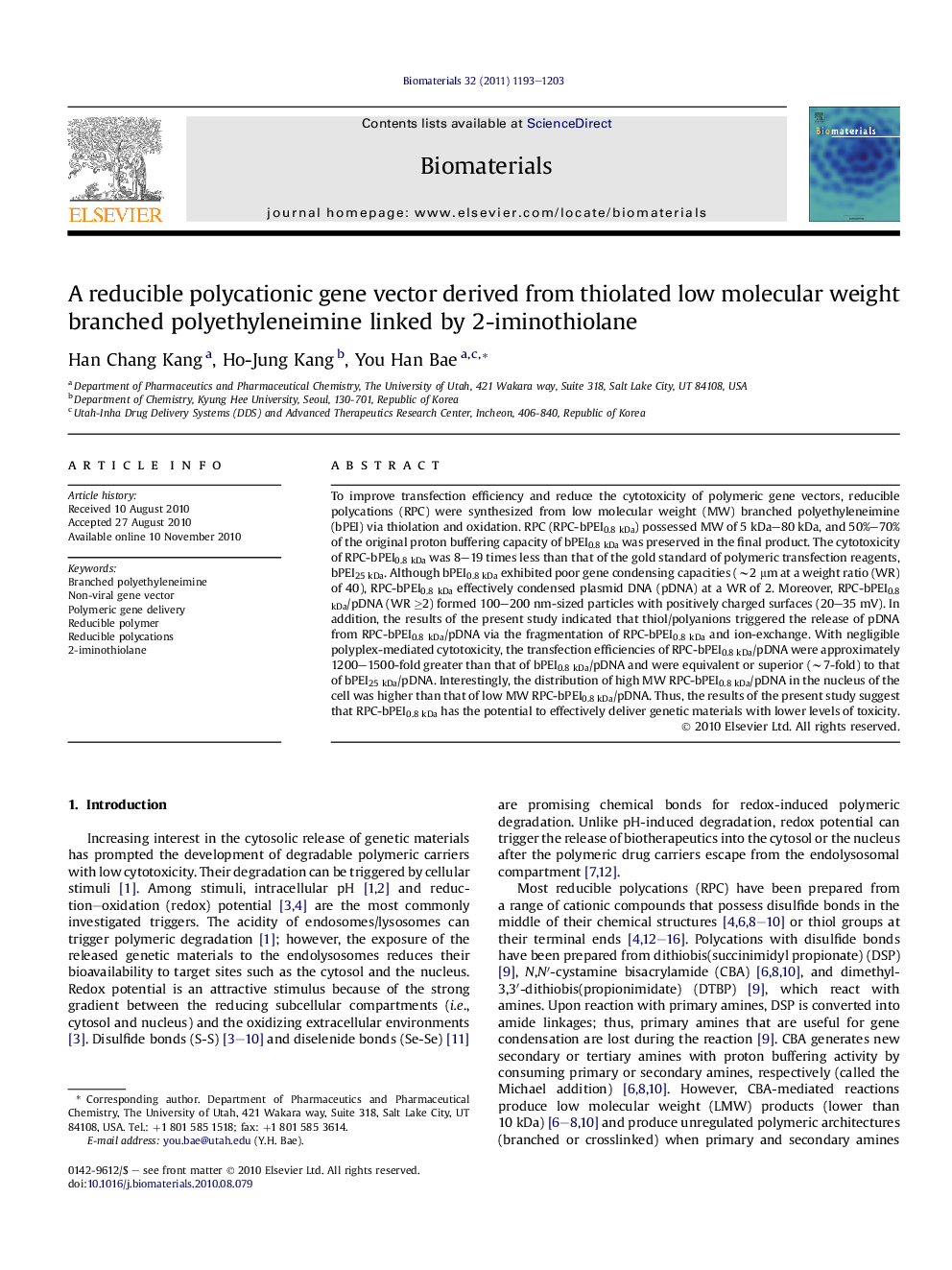| Article ID | Journal | Published Year | Pages | File Type |
|---|---|---|---|---|
| 8249 | Biomaterials | 2011 | 11 Pages |
To improve transfection efficiency and reduce the cytotoxicity of polymeric gene vectors, reducible polycations (RPC) were synthesized from low molecular weight (MW) branched polyethyleneimine (bPEI) via thiolation and oxidation. RPC (RPC-bPEI0.8 kDa) possessed MW of 5 kDa–80 kDa, and 50%–70% of the original proton buffering capacity of bPEI0.8 kDa was preserved in the final product. The cytotoxicity of RPC-bPEI0.8 kDa was 8–19 times less than that of the gold standard of polymeric transfection reagents, bPEI25 kDa. Although bPEI0.8 kDa exhibited poor gene condensing capacities (∼2 μm at a weight ratio (WR) of 40), RPC-bPEI0.8 kDa effectively condensed plasmid DNA (pDNA) at a WR of 2. Moreover, RPC-bPEI0.8 kDa/pDNA (WR ≥2) formed 100–200 nm-sized particles with positively charged surfaces (20–35 mV). In addition, the results of the present study indicated that thiol/polyanions triggered the release of pDNA from RPC-bPEI0.8 kDa/pDNA via the fragmentation of RPC-bPEI0.8 kDa and ion-exchange. With negligible polyplex-mediated cytotoxicity, the transfection efficiencies of RPC-bPEI0.8 kDa/pDNA were approximately 1200–1500-fold greater than that of bPEI0.8 kDa/pDNA and were equivalent or superior (∼7-fold) to that of bPEI25 kDa/pDNA. Interestingly, the distribution of high MW RPC-bPEI0.8 kDa/pDNA in the nucleus of the cell was higher than that of low MW RPC-bPEI0.8 kDa/pDNA. Thus, the results of the present study suggest that RPC-bPEI0.8 kDa has the potential to effectively deliver genetic materials with lower levels of toxicity.
